A bittern at Huttoft Pit on the 1 July remained in the area daily until the end of the month. Consultation with colleagues at Far Ings confirmed the bird to be an adult. Presumably a post breeding adult as they do start nesting early in the year. It is encouraging to note that the area can support a bittern for such a lengthy stay. Hopefully this species will breed in future with some careful habitat management.
Lincolnshire Coastal Country Park – July 2021
Roe deer buck (c) Garry Wright
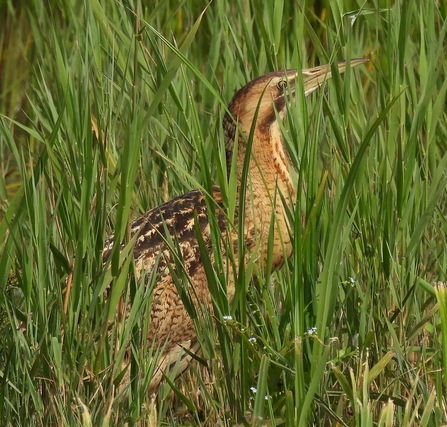
Bittern – a scarce visitor that took up residence at Huttoft Pit throughout the month.
Great white egret was also recorded on several dates from Huttoft Pit and often alongside the bittern.
A sighting of two young water rail chicks on 31st was noteworthy as these birds tend to be very elusive while breeding.
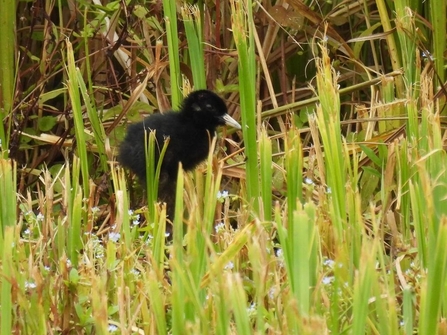
Water rail – a rare sighting of a young water rail chick, they are typically very elusive in the breeding season
The two remaining marsh harrier nests successfully fledged young in early July with three chicks from each pair. This is possibly a new record count of marsh harrier fledglings with six in one year. The young remained in the area for a couple of weeks before dispersing.
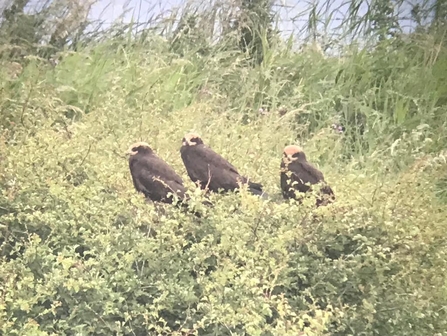
Marsh harrier – three freshly fledged juvenile, possibly a record year for this species with six young fledged from two pairs
A quail was seen in flight over the coast road on 8th and could well have been the same individual seen and heard in May. It is possible that they could be breeding in the Lincolnshire Coastal Country Park as they are easily overlooked due to their secretive nature.
Returning wader migration is always a highlight from mid-July with many northern species returning for the autumn/winter. This migration usually takes place over the sea from first light and lasts until 9am, typically on days with south-westerly winds. During this period species such as knot, dunlin, sanderling, whimbrel, curlew, turnstone, black-tailed godwit and bar-tailed godwit were recorded heading south in varying numbers on a daily basis. The first movement was noted on 10th July and included a single little stint and 36 black-tailed godwit. Other highlights included a purple sandpiper and 47 whimbrel on the 29th and a red-necked phalarope south with dunlin on 30th.
Sandwich tern numbers have been gradually building throughout the month starting with 23 on 15th and peaking at of 432 by 25th. The birds we see on the Lincolnshire coast are thought to be the breeding birds from North Norfolk. Numbers typically peak during late July and August with few birds seen in the spring or early summer. These large numbers of sandwich tern usually attract a few Arctic skua.
Seabird activity started to pick up from late July with daily sightings of Arctic skua and several records of great skua. Three little gull, two red-throated diver and 12 little tern were recorded on 2nd and three Manx shearwater on 13th.
A short-eared owl and barn owl were both recorded over Sandilands Golf Course on a few dates during the month.
On the 26th July a total of 1,179 Swallow were observed flying south over 4 hours, out of these birds, 80% were believed to be juveniles. The following day a flock of 1,000 – 2,000 were seen hawking insects over Sandilands Golf Course and were again mostly juvenile birds. Earlier in the month a few big swift movements were noted with 100 south on 5th and over 1,000 south on both the 6th and 7th.
Non-avian highlights
One of the standout highlights of the month was the discovery of marsh helleborine orchids by our Tuesday volunteers on 13th July. This is quite a significant record and most unexpected. Interestingly there is an historic record of marsh helleborine from the Chapel St Leonards area in 1935. Many thanks to Greater Lincolnshire Nature Partnership for providing this information.
A total of three flowering spikes were recorded on the initial day of discovery. A follow up survey next day resulted in the finding of 12 spikes which included five flowering and seven non-flowering. The Lincolnshire Coastal Country Park now represents the third modern day site for this orchid species in Lincolnshire.
Marsh Helleborine – a new orchid species for the Lincolnshire Coastal Country Park found by the Tuesday work party volunteers
A couple of scarce dragonflies were noted through the month with a red-veined darter on 5th and a brown hawker at Wolla Bank on 26th. Brown hawker is a common breeding species in the UK but generally scarce on the coast. Red-veined darter is a migrant to the British Isles with small numbers now starting to establish in the UK in recent years. In addition to these species willow emerald damselfly was again recorded at Huttoft Pit with annual sightings now for the last 3-4 years. This species is gradually spreading northwards in the UK.
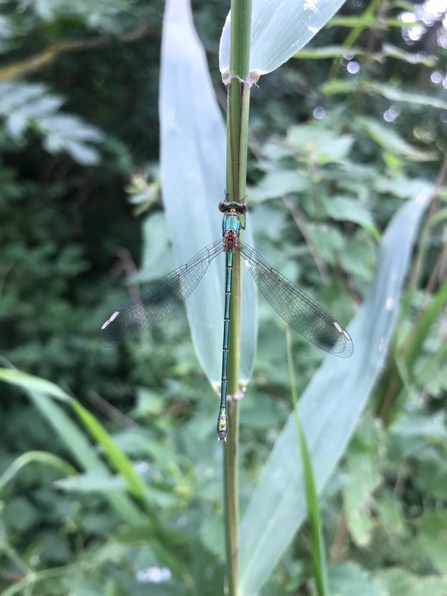
Willow Emerald – this species continues to colonise northwards in the UK
National Whale and Dolphin Watch 2021 was quite productive this year with several sightings of harbour porpoises during the week and an unexpected two bottle-nosed dolphins on 26th July.
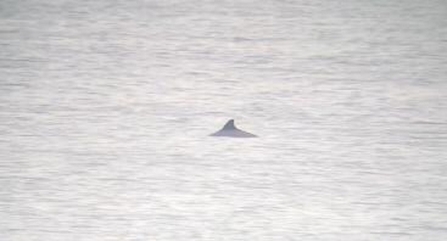
Harbour porpoise – there were several sightings over National Whale & Dolphin Watch week
Moth trapping at Wolla Bank on 8th July produced a ruddy carpet (only the 10th Lincolnshire record since 1946), eight July highflyer, sorched wing, blackneck, four dotted fanfoot and several species of wainscot which included fen, shore, striped and southern. This moth trapping session was undertaken as part of the annual National Moth Night event with this year’s theme being reedbed and wetland habitats.
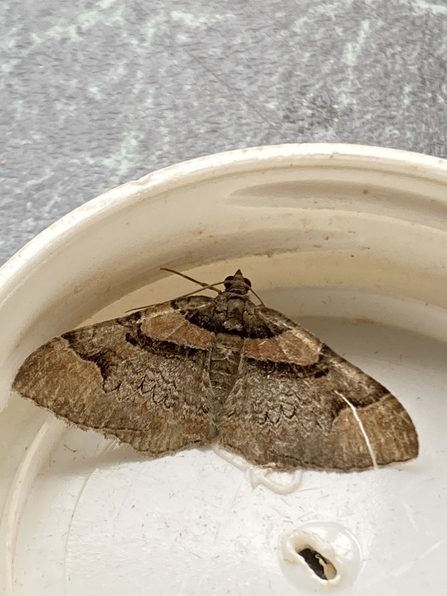
Ruddy carpet – trapped in moth trap during the National Moth Night event, only the 10th record in Lincolnshire
Butterfly species during the month included red admiral, painted lady, meadow brown, ringlet, gatekeeper, small skipper, Essex skipper, large white, green-veined white, small white, speckled wood, peacock, small tortoiseshell and small copper.
Top five species to look for in August
- Sand martin – the last birds will be departing south during the month to wintering grounds in South Africa. Look out for this species flying overhead.
- Terns – August is typically the peak month for tern activity with large gatherings of birds post breeding. Listen out their loud scratchy calls over the beach and shoreline. If you listen closely you might be able to hear young birds food begging. A careful look through the tern flocks should reveal common, Arctic, sandwich and maybe even a black tern.
- Small/Essex skipper – the similar Essex and small skipper are generally one of the last butterflies to emerge in late summer. Keep an eye out for them on blue or purple flowering plants which this species tends to favour. You can separate Essex and small skipper by looking carefully at the underside of the antennae tips. Essex skipper have distinctive black tips to the antennae whereas small skipper is usually orange.
- Migrant hawker – this is a late flying dragonfly which can be on the wing until October. Look out for them along the coastal footpath areas especially from Wolla Bank car park to Anderby Creek. Migrant hawker also becomes the most numerous dragonfly as the summer/autumn progresses.
- Grey seal – keep a look out on the sea for grey seals which will start to become more active as they approach the upcoming pupping season. You will often just see a curious head sticking up out of the water.

